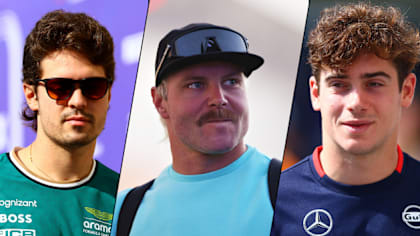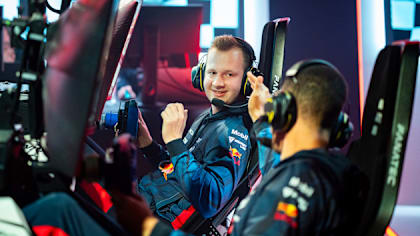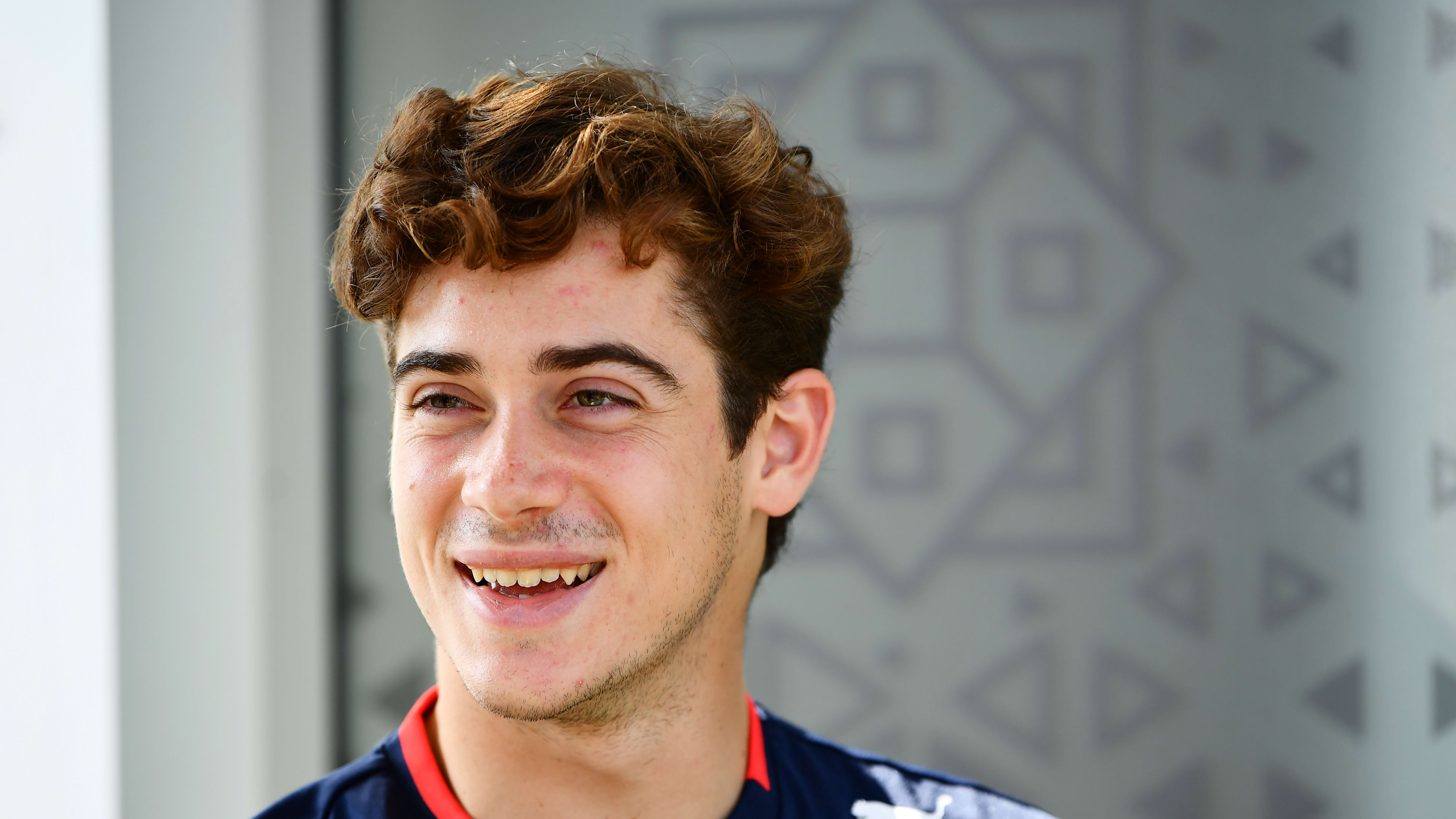From thrilling wheel-to-wheel battles to controversial collisions, few drivers have provided Formula One racing with as many iconic moments as Ayrton Senna. 20 years after his untimely death, we remember 20 defining moments in the Brazilian’s unforgettable F1 career, including that famous win at Donington and those memorable clashes with Alain Prost in Japan...
A first taste of F1 power, UK, 1983
Senna gets to grips with Keke Rosberg’s Cosworth-powered Williams FW08 during his first test of a Formula One car at Donington Park in July 1983. A star in the making, the 23-year-old was in the midst of a record-breaking season in British Formula Three when he was offered the test opportunity by Frank Williams. Despite a hugely impressive 83-lap outing, Williams passed up their chance to sign Senna, as did McLaren and Brabham who both subsequently tested the Sao Paulo-born racer.
(© Sutton Images)
An underwhelming Grand Prix debut, Brazil, 1984
Senna sits pensively in the cockpit of his Toleman-Hart TG183B - the car with which he’d make his somewhat stunted Grand Prix debut on home soil in 1984. He qualified in 16th - one place ahead of more experienced team mate Johnny Cecotto - but his troublesome car lasted just eight laps of the race before it succumbed to turbo failure. But the result didn’t matter - Senna was on the Formula One grid, where he belonged.
(© Sutton Images)
Making a splash, Monaco, 1984
The sixth race of the 1984 season in Monaco was the race that Senna, seen here skipping his Toleman through puddles, established himself as a bona fide superstar in waiting. In a dry qualifying session the yellow-helmeted pilot could only manage 13th on the grid, but conditions on race day were considerably bleaker. With the advantages of his rivals’ more competitive cars blunted by the rain, Senna charged through the field, picking off the likes of Keke Rosberg and Niki Lauda. But just as an unlikely victory seemed possible, conditions resulted in the race being red-flagged. Though initially disappointed to have to settle for second place behind victor Alain Prost, the red flag was probably a blessing in disguise for Senna - he’d earlier damaged his suspension and if the race had gone the full distance, it’s unlikely he would have finished.
(© Sutton Images)
A first taste of victory, Portugal, 1985
Having taken his first podium in wet weather, it was rather appropriate that Senna scored his maiden F1 win in similarly damp conditions at Estoril. In just his second race for Lotus, he began the weekend by eclipsing the field in qualifying to claim the first of his 65 career poles. He then showed his rivals a similarly clean pair of heels on race day, surviving the treacherous conditions and a minor off-track moment to win by over a minute.
(© Sutton Images)
A very close finish, Spain, 1986
Senna’s Lotus 98T Renault (left) crosses the line just ahead of Nigel Mansell’s Williams FW11 Honda at the finish of the 1986 Spanish Grand Prix at Jerez. Mansell had hunted Senna down in the closing stages of the race after opting to take on fresh tyres, but the Briton couldn’t find a way past. Senna’s winning margin of 0.014s remains one of the smallest in F1 history.
(© LAT Photographic)
Mastering Monaco for the first time, 1987
Graham Hill might have earned the nickname ‘Mr Monaco’ for his five triumphs in the Principality, but Senna was truly the master of Monte Carlo’s tight and twisting streets. He is pictured here rounding Massenet in his sparking Lotus on route to the first of his record six victories in Monaco. Unlike his later wins, this one owed as much to fortune as skill after he inherited the lead when Williams’ Nigel Mansell suffered turbo problems.
(© Sutton Images)
A rare driving error, Monaco, 1988
Senna may have made some questionable decisions on the race track in his career, but he rarely made a straightforward driving error. But at Monaco in 1988 that’s just what he did. Having crushed McLaren team mate and nearest challenger Alain Prost by 1.4s in qualifying, Senna raced into an unassailable lead in the race, only to inexplicably crash at Portier just over ten laps from the finish. Understandably angry with himself, Senna wasn’t seen again until the next day.
(© Sutton Images)
Getting the upper hand on Prost, Hungary, 1988
McLaren’s Honda-powered MP4/4 was very much the dominant force in 1988, and that made it a two-horse race for the title between Senna and team mate Alain Prost. The battle swung both ways, but rarely was it as hotly contested as in Hungary. The Brazilian (pictured in front) led most of the way before losing the lead to Prost, regaining it and eventually crossing the finish line just 0.529s ahead of his rival.
(© LAT Photographic)
Charge to the championship, Japan, 1988
Senna’s hope of securing the 1988 title with one race to go got off to the worst possible start at Suzuka when he stalled from pole position. Luckily, the slope on the pit straight enabled him to bump-start his car back into life, but by that stage title rival Prost was leading and he was down in 14th. Then came the charge. Senna quickly sliced through the field and by lap 28 he was able to surge past Prost and into the lead. Victory was deservedly Senna’s, as was the title. Cue these emotional scenes on the podium.
(© Sutton Images)
McLaren rivalry turns ugly, Japan, 1989
A year on from Senna’s inaugural title triumph at Suzuka, the Brazilian and arch rival Prost again arrived in Japan in the thick of a title battle, only this time relations between the two men were decidedly frostier. Prost led for most of the race, but by lap 46 Senna had closed in enough on his team mate to have a lunge up the inside into the chicane. The pair tangled and came to a halt, wheels locked. As can be seen in this picture, Prost abandoned his McLaren, but Senna - with a little help from the marshals - not only fought his way back into the race, but also back into the lead. His subsequent disqualification from P1 - for using the escape road when re-joining the track - not only cost him the title, but would leave a bitter taste in Senna’s mouth for over a year…
(© Sutton Images)
In discussion with Prof Watkins, Spain, 1990
He may have been a fierce competitor on track, famous for never giving an inch, but Senna was deeply aware of the dangers of his chosen profession. In this photo, taken at Jerez in 1990, Senna is pictured in conversation with his friend, F1 doctor Professor Sid Watkins, not long after Lotus’s Martin Donnelly had been seriously injured in a crash in the first qualifying session. Senna was one of the first drivers on the scene and stayed to watch doctors work on the Northern Irishman. Astonishingly, though deeply moved by Donnelly’s plight, Senna’s commitment on track remained undimmed - barely an hour after the crash he broke the circuit’s lap record.
(© Sutton Images)
Senna and Prost clash again, Japan, 1990
Still seething from the previous year’s ‘injustice’, Senna’s mood was not improved when he learned that his hard-earned pole position grid slot would be on the dirtier side of the track. Predictably, perennial title rival Alain Prost - starting second and now driving for Ferrari - made it to the first corner ahead, but Senna had already decided that he would not yield. With thrilling inevitability the pair collided, but as the duo spun into the gravel trap at high speed, this time it was Senna who benefitted. The Brazilian had secured title number two but there were very few smiles from the champion, just the sense that in his mind at least, justice had been done.
(© Sutton Images)
The win he wanted more than any other, Brazil, 1991
Senna loved his homeland and his homeland loved him, but try as he might he seemed destined to never win in Brazil. At Interlagos in 1991 it looked like he’d be adding ‘gearbox woes’ to the long list of reasons why he’d failed to climb onto the top step of the rostrum on home soil, but somehow he soldiered on to victory using only sixth gear. In this picture a physically-drained Senna waves the Brazilian flag on the podium, having only just managed to summon the strength to lift the winner’s trophy above his head.
(© LAT Photographic)
Going wheel-to-wheel with Mansell, Spain, 1991
This image depicts one of the most electrifying sequences in the history of Formula One racing - Nigel Mansell’s Williams (left) running wheel-to-wheel with Ayrton Senna’s McLaren along Barcelona’s 300km/h pit straight, sparks flying spectacularly from underneath both cars and barely a hair’s breadth between them. Mansell won the battle on this occasion, but Senna wasn’t going to go down without a fight.
(© LAT Photographic)
Getting a lift, Britain, 1991
Despite their intense on track battles, there was mutual respect between Nigel Mansell and Senna, so when the victorious Williams driver saw his Brazilian rival stranded on the side of the road after running out of fuel on the last lap of the 1991 British Grand Prix, he did the decent thing and offered him a lift back to the pits. Senna was eventually classified fourth, having been running second when his fuel tank ran dry.
(© Sutton Images)
A winner in Belgium - again, 1991
Of all the tracks in F1 competition, there were two on which Senna - in most circumstances - was virtually unbeatable. The first was Monaco, the other Belgium’s Spa-Francorchamps. Senna won five times at the Ardennes circuit, including four times in a row between 1988 and 1991. Here Senna joyously celebrates his final victory at ‘the ultimate drivers’ track’ in 1991.
(© Sutton Images)
Resisting Mansell’s charge, Monaco, 1992
Williams’ Nigel Mansell arrived in Monaco having dominantly won five successive races to open the ’92 season, and were it not for an opportunistic drive by Senna, he would have won in the Principality too. The Briton, suspecting a puncture, was forced to make a late tyre change, handing an unexpected lead to his Brazilian rival. Over the closing stages Mansell reeled Senna back in, but the moustachioed racer could do nothing to pass the perfectly positioned McLaren. In this picture the two battle through the harbourside chicane.
(© Sutton Images)
Walking on water, Donington, 1993
As this picture illustrates, Senna was streets ahead of the opposition in the appallingly wet European Grand Prix at Donington in 1993. The McLaren driver could only qualify his underpowered car in fourth in dry conditions, 1.6s behind polesitter Alain Prost, and actually dropped to fifth place at the first corner, but he would only go forward from that point on. Michael Schumacher’s Benetton was dispatched at corner exit, as were Karl Wendlinger’s Sauber, and then the technically dominant Williams cars of Damon Hill and Prost in an extraordinary first lap. By the flag Senna was 1m 23s ahead of nearest rival Hill and a lap ahead of Prost. His greatest victory? Quite possibly.
(© LAT Photographic)
His final victory, Australia, 1993
In an intriguing coincidence, Senna’s final F1 win came in what was great rival Alain Prost’s final Grand Prix appearance. The Brazilian is pictured here triumphantly celebrating victory as he makes his way down the Adelaide pit lane to parc ferme. Moments later Senna, who was driving in his last race with McLaren, would share an emotional embrace with second-placed Prost on the podium. One of sport’s most enduring rivalries had finally come to an end.
(© Sutton Images)
A frustrating start, Aida, 1994
Having battled against them for years, Senna finally joined Williams in 1994 to set up what should have been the ultimate F1 dream team. Sadly the FW16 proved initially to be a quick but poor-handling car, and having spun out of the opening race in Brazil, Senna enjoyed similarly putrid luck at the Pacific Grand Prix. Having made a poor start from pole, his blue and white machine was tipped into the first corner gravel by Mika Hakkinen. In a further insult, his stricken car was then tagged by Ferrari stand-in Nicola Larini (right).
(© Sutton Images)
)



